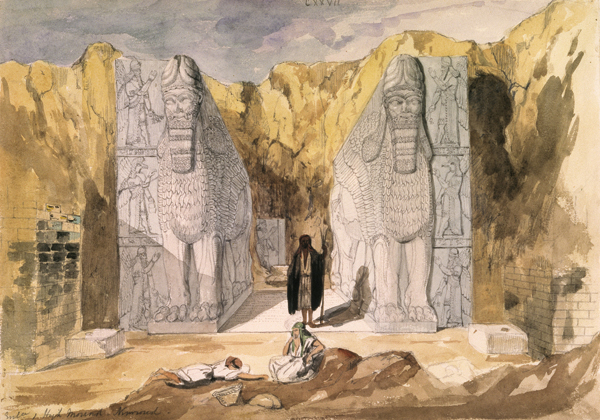Image Details

British Museum
Two colossal human-headed lions guard the entrance to the Assyrian king Ashurnasirpal II’s (883–859 B.C.E.) shrine to the warlike deity Ninurta, in Nimrud (biblical Calah), in modern Iraq. The statues were excavated by the intrepid British explorer Austen Henry Layard, who worked in Mesopotamia from 1845 to 1851. British artist Frederick Cooper, who accompanied Layard, captured the discovery in watercolor.
Layard shipped several statues back to the British Museum, which sponsored his excavations, including a similar 10-foot-tall, 3-ton bull statue (see photo of bull statue; note the hooves) from a palace of Ashurnasirpal II. The British public was stunned, not so much by the beauty of the sculptures (the museum’s Elgin marbles from Athens set the standard for artistic merit), but by their antiquity, their scale and, most importantly, their potential to corroborate biblical history. Layard’s discoveries arrived just in time to assist conservative British theologians in a debate with their more radical German counterparts, who were questioning more and more of the history recorded in the Bible.
